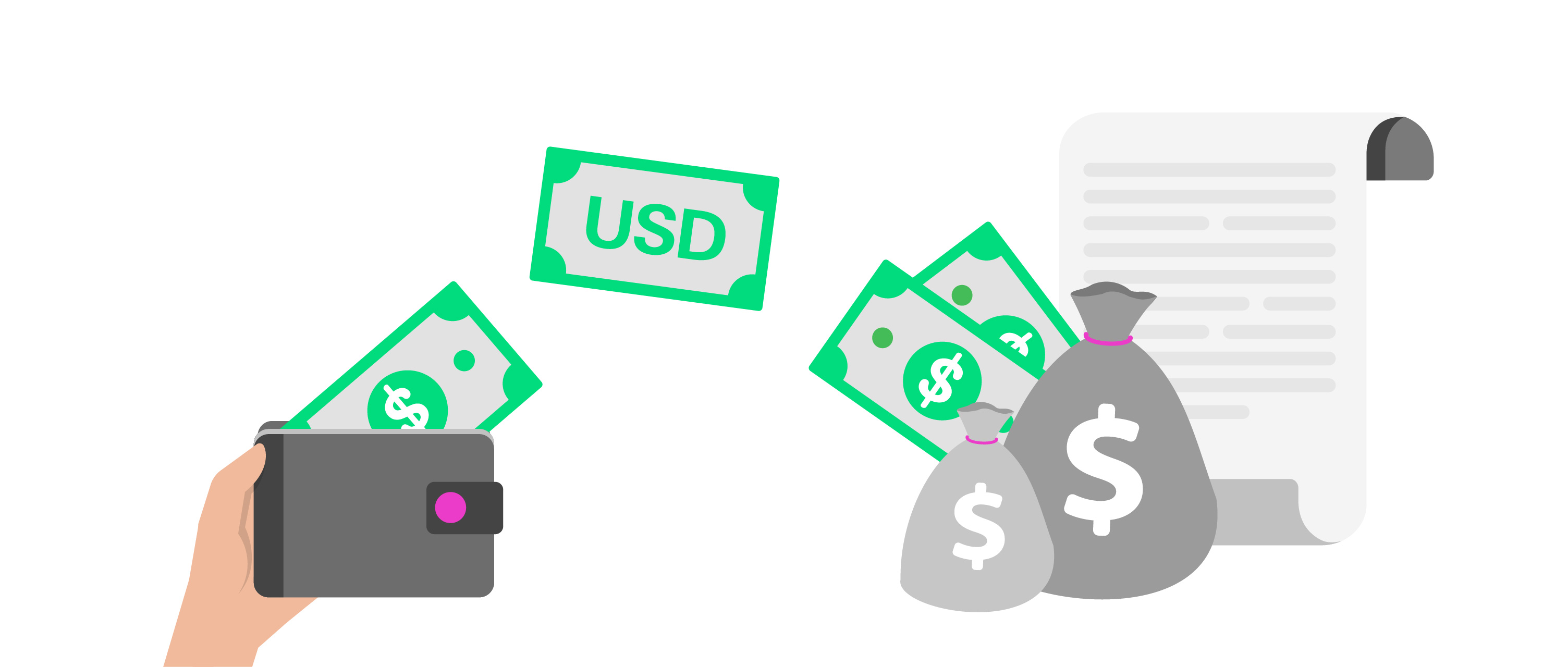Are there secret weapons to help you save faster?
We all know the benefits of saving money, but it’s often easier said than done when you have different financial obligations to meet! Don’t give up. Here are some tips on developing effective saving habits.
Now that 2022 is almost over, it’s time to set a new financial goal for the new year. After all, it is by staying committed to growing our wealth that we can enrich our future with more possibilities. Whether you’re planning a secure retirement for yourself or saving for your children’s education, having a good savings habit and effective financial tools can help you reach your goal sooner than you think. Let’s look at Angel’s example:

Angel works in accounting, so she is good at numbers and managing her money. She often shares her insights on how to save money effectively with her friends.
Count every dollar!
The world is full of temptations: new phones, limited-edition handbags, sumptuous omakase dinners. We always seem to want more than we can afford! That’s why, for many people, it’s easy to overspend. While everyone wants to reward themselves for their hard work once in a while, spending without moderation can stop you from reaching your savings goals or even incur deficits.
Angel set herself a monthly spending limit years ago, and records all her expenses, big or small, in a computer spreadsheet. That way, she’ll know right away whenever she has exceeded her monthly quota. This not only reminds her to review her spending habits regularly but shows her what she’s spending the most on. For instance, she was working long hours at the beginning of the year. The result was quite a bit of shopping therapy. Her record showed that she ended up buying 5 lipsticks and 2 pairs of high heels over a short period. Presented with the evidence of her uncharacteristic indulgence, she reminded herself that she already had enough of those luxuries, and any additional acquisitions would be pointless. She hasn’t added to her lipstick and shoe collections since. The result is, of course, less spent, more saved.
 |
Make good use of savings and transaction accountsAngel is very organised and separates her expenses and savings into different accounts. After each month’s payday, she would put a portion of her salary in the savings account to keep it out of reach. As for the rest, she deposits it into the transaction account to cover her expenses. If there is money left over in the transaction account at the end of a month, she’d transfer it to the savings account to boost her reserve. |
 |
Set a savings goalHaving a goal keeps you going in the right direction. Angel is 35 and she hopes that, by the time she is 65 and ready to open a carefree new chapter in her life, she will have a substantial reserve in place to turn that into reality. |
 |
Choose the savings tools that are right for youAngel understands a carefree retirement requires a major investment. She spent some time looking for a savings tool on the market which would help her reach her goal sooner. In the end, she chose a life insurance plan which offered opportunities for long-term wealth growth. She was drawn to these features in particular: |

Potential wealth growthBy paying a monthly premium of just over USD$700*, she’d be enjoying the potential wealth growth offered by her policy as well as life protection until the age of 99. |

Contributions are made in USDHelp diversify her currency risk exposure^ and making it more convenient for her if she needs to make foreign exchange transactions. |

Policy Value Management OptionAngel is concerned about possible market instability in the near future. By exercising the Policy Value Management Option, she has locked in a portion of her policy’s cash value by assigning it to the Policy Value Management Balance, thereby insulating it from market fluctuations and giving herself greater peace of mind. |

Change of Life InsuredShe understands that life can be unpredictable. At the same time, she doesn’t rule out of the possibility of becoming a mother in a few years. One advantage of her policy is that it allows her to change the life insured to a loved one. If necessary, she can even pass it on to the next generation in the future. |
Life is a long and exciting journey. Raising a family, pursuing further education, starting your own business, buying a property, enjoying your well-deserved retirement, all these need to be backed up with considerable financial resources. Plan for the future and find the right savings tools to help you get the most out of your capital, and you can also start planning the celebrations you would have as you reach each new milestone.
* The above example assumes (i) the life insured is a 35-year-old female, non-smoker; (ii) monthly premium is USD729.2 and a premium payment period of 3 years.
^ You are subject to exchange rate risks. If your insurance policy is denominated in a currency other than the local currency, or if you choose to pay premiums or receive benefits in a currency other than the policy currency, the actual amount paid or received by you will be subject to change according to the prevailing exchange rate between the policy currency and the local / payment currency to be determined by HSBC Life (International) Limited from time to time. Exchange rate fluctuations may have an impact on payment amounts, including but not limited to premium payments, levy payments and benefit payments.
